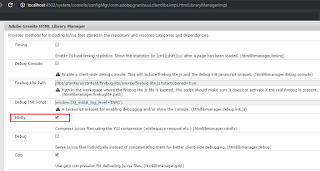
Adoption of reactive streams for request and response.Asynchronous support using CompletableFutures (Executor Framework).Support for both HTTP Protocol version 1.1 and 2.0.This blog post will discuss the HTTP Client feature in Java 11 with a focus on the new classes in the package and the HTTP Client related classes (though the module has both HTTP Client and Websocket API).īelow are some highlights of the HTTP Client: With this new HTTP Client addition, we do not need any of those libraries. Similarly, for invoking HTTP services we would most likely use Apache HttpComponents or OKHTTP (Spring Framework has an abstraction over these libraries). Bringing in Java Time from JODA and Dependency Injection from Spring Framework are great examples. One of the common goals for a new Java version is to bring third-party library functionalities into Java. Java 8 was a game changer to the Java Developer Community after Java 5. However, with the frequency of so many new Java releases, most of the Java Developer Community is still using Java 8. There were many new features added in Java versions 9 and 10 before Java 11.
#Java http client library how to#
Next week: How to process request and response bodies without having to keep them in memory in their entirety.Java 11 was released two years ago on Septemand Java 15 is due to be released anytime now. If you call sendAsync, the call immediately returns with a CompletableFuture > that you can then chain further processing steps to. If you use send, the method call blocks until the response is complete and then returns an HttpResponse. You also have to provide a BodyHandler, which you can get from BodyHandlers - it is in charge of transforming response bytes to something more amenable. With an HttpClient and HttpResponse in hand, you can call either send or sendAsync on the former. If the request has a body, provide it as a BodyPublisher you will mostly use the factory methods on BodyPublishers for that. You can override the client's HTTP version, timeout, and so forth. build ( ) you get an immutable and reusable HttpRequest. You can $configure preferred HTTP version, timeout, proxy, cookie handler, executor for asynchronous requests, and more. build ( ) you get an immutable and reusable HttpClient.

You need two ingredients to send a request:

Handling the request/response lifecycle asynchronously is pretty neat, but it still suffers from a (potential) downside: Both the request's and the response's body have to be processed in one piece.
#Java http client library free#
The principal fact is that our thread is free to do other things while requests are send and responses received in the background.

This is not a benchmark, though, so never mind. This usually takes about 75% of the time of the blocking approach, which, I have to admit, I find surprisingly slow. newBuilder ( ), configure ahead, and finish with build ( ):īodyPublisher requestBody = BodyPublishers. To create an HttpClient, simply call HttpClient. Let's quickly go through the steps one by one. You can configure clients and requests wherever you want, keep them around, and reuse them without worrying about negative interactions between different requests or threads.Īnd even though I recently went on record badmouthing the builder pattern, I think this is a great use case for it. Right off the bat, I love the focus on immutability!

In this post, I introduce you to the new API and show you how to send synchronous and asynchronous requests. It's a fluent, easy-to-use API that fully supports HTTP/2, allows you to handle responses asynchronously, and can even send and receive bodies in a reactive manner. http with HttpClient, HttpRequest, and HttpResponse as its principal types. Since Java 11, the JDK contains a new HTTP API in java.


 0 kommentar(er)
0 kommentar(er)
